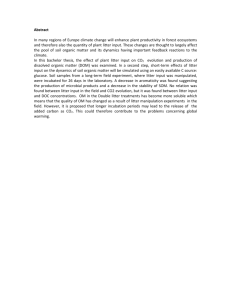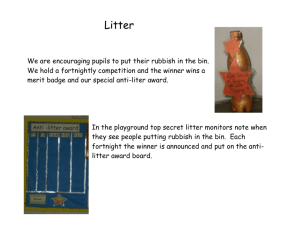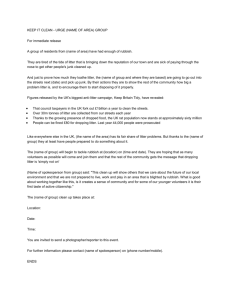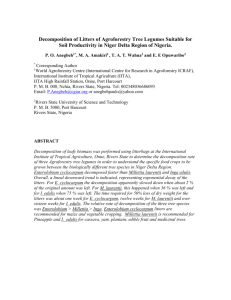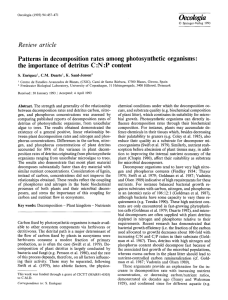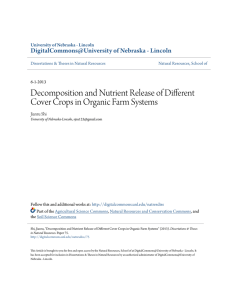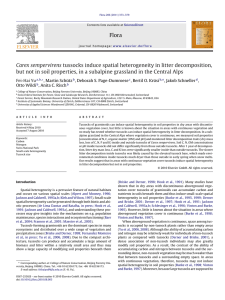Wasting away (Word - 128kb)
advertisement
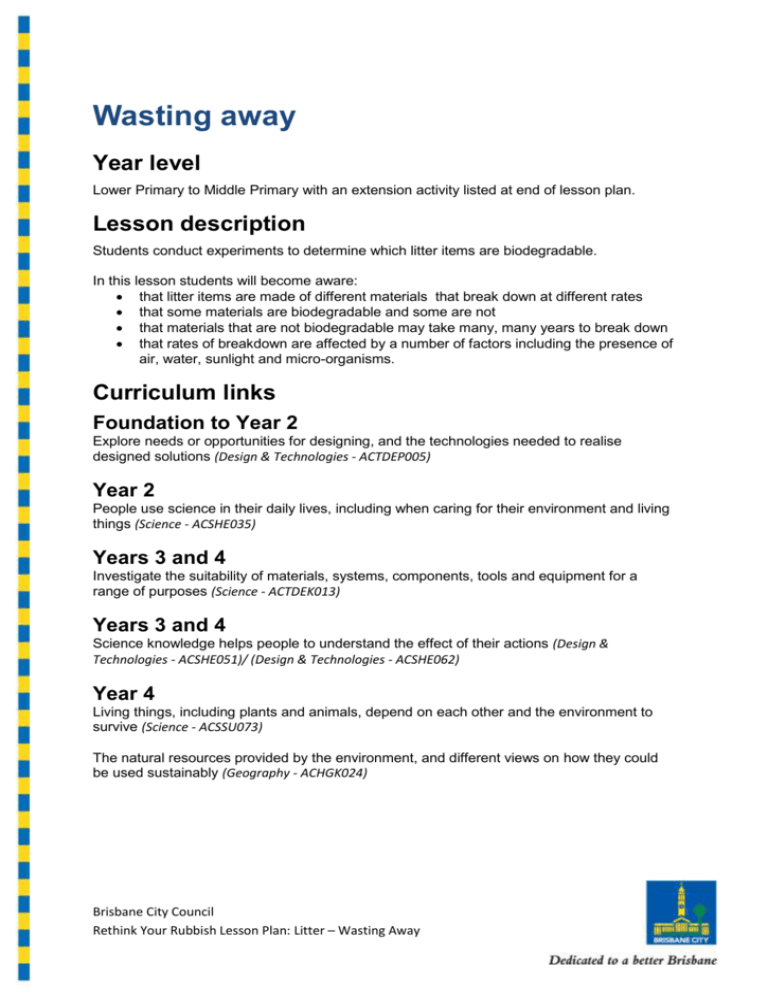
Wasting away Year level Lower Primary to Middle Primary with an extension activity listed at end of lesson plan. Lesson description Students conduct experiments to determine which litter items are biodegradable. In this lesson students will become aware: that litter items are made of different materials that break down at different rates that some materials are biodegradable and some are not that materials that are not biodegradable may take many, many years to break down that rates of breakdown are affected by a number of factors including the presence of air, water, sunlight and micro-organisms. Curriculum links Foundation to Year 2 Explore needs or opportunities for designing, and the technologies needed to realise designed solutions (Design & Technologies - ACTDEP005) Year 2 People use science in their daily lives, including when caring for their environment and living things (Science - ACSHE035) Years 3 and 4 Investigate the suitability of materials, systems, components, tools and equipment for a range of purposes (Science - ACTDEK013) Years 3 and 4 Science knowledge helps people to understand the effect of their actions (Design & Technologies - ACSHE051)/ (Design & Technologies - ACSHE062) Year 4 Living things, including plants and animals, depend on each other and the environment to survive (Science - ACSSU073) The natural resources provided by the environment, and different views on how they could be used sustainably (Geography - ACHGK024) Brisbane City Council Rethink Your Rubbish Lesson Plan: Litter – Wasting Away Materials Selection of litter items including: soft plastics such as cling wrap or chip packets; hard plastics such as a pen or empty yoghurt tub; polystyrene items such as a coffee cup or food or takeaway food container; glass such as a juice bottle; metal such as an empty can or aluminium foil; cardboard such as a toilet roll or juice box; paper such as tissue or office paper; cloth or clothing such as a sock or handkerchief; food such as banana, bread, meat, apple core, biscuit or orange peel Fact sheet: ‘Decomposition times’ (available on Brisbane City Council’s website) Scales Paper or recording sheet for noting changes in appearance of waste items Procedure 1. Students work in pairs and each pair has a piece of paper for recording weekly changes over a period of four weeks. 2. Litter items are placed on the floor where everyone can see them and each pair writes down on their sheet the two things that they guess will break down most easily. 3. Each pair chooses an item and takes a photograph and weighs it before burying item in a raised garden bed. If there is no raised garden bed available, items can be buried in an ice cream container full of garden soil or straight in the ground. Mark the location of each item with a paddle pop stick with the names of each pair. 4. Water the soil lightly where item is buried to speed up decomposition. 5. Dig up items once a week over a period of four weeks and note down any changes on the recording sheet. Weigh and photograph item each time and add these details to the sheet. Bury item back in the soil and water soil lightly each time. 6. After four weeks dig up all items and compare results. 7. Discuss results with students. Questions might include: Which items have broken down the most? The organic/biodegradable items such as banana skins or bread. Why do you think this is? Organic waste is waste that has come from living organisms, for example, bananas come from banana plants, bread comes from wheat, paper from trees, meat comes from animals. All organic matter is biodegradable, that is, it will break down naturally and relatively quickly through the action of microorganisms. Other factors such as air, water, sunlight, insects, fungi and worms will also contribute to the process of decomposition. Do you think the breakdown of organic material is good for the surrounding soil, or bad for the surrounding soil? Brisbane City Council Rethink Your Rubbish Lesson Plan: Litter – Wasting Away Organic materials release nutrients back into the soil. Nutrients are like food for the earth and are extremely beneficial for the environment. Which items showed no signs of change? The inorganic/non-biodegradable items. What materials are these items made from? Plastic, metal, glass etc. How long do you think these items would take to break down? Use the ‘Decomposition times’ fact sheet from Council’s website to share breakdown times with students. Do you think that these materials would be good or bad for the environment? If you were trying to protect the environment what are some of the things that you could do that would stop these items from polluting the earth? Avoid excessive packaging, purchase items that are able to be reused, composted or recycled. Extension activity Students bury the same biodegradable items, but change conditions for each item. For example, items could be buried in different materials such as sand, soil or gravel, or some items could be watered and some not. Test a range of different conditions and record results to see which factors cause the most rapid decomposition. Brisbane City Council Rethink Your Rubbish Lesson Plan: Litter – Wasting Away


